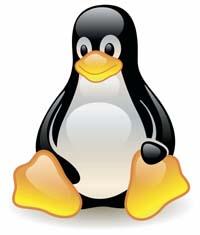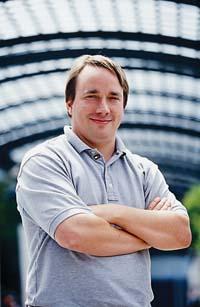GNU/Linux, strong and free competition between operating systems

The Linux kernel was created by the Finnish Linus Torvalds, with the aim of getting a Unix-like operating system to move with Intel 80386 processors. The core of the operating system is the low-level software system: the layer between hardware and drivers and applications is the software system. It also offers functions such as multitasking, network communication and security measures, load balancing, disk control and file systems.
However, the kernel is not what we consider a complete operating system today, as in addition to the kernel, operating systems provide applications and resources such as calculator, system configuration resources and text editor. In the linux world, the entire operating system is called GNU/Linux to differentiate it from the kernel.
The Linux project was born in 1991 with a famous message from Linus Torvalds. In Usenet's comp.os.minix group, with the aim of bringing together volunteer developers, he asked to collaborate in the development of a Unix-like operating system for personal computers over the Internet. In some cases, Minix developers contributed ideas and snippets of source code, and since then contributions have been made by thousands of programmers who have been releasing new versions of the kernel.
Since then, the history of the Linux kernel has been closely linked to the GNU project. The GNU project was born in 1983 with the aim of developing the entire Unix system through free software. In 1991, when the first version of the Linux kernel came out, the GNU project had several components of the operating system, but the kernel was missing, so the kernel created by Linus Torvalds filled the void.
Structure and license
The Linux kernel is written primarily in C language and is a monolithic hybrid, that is, all kernel functions are in a single program, not structured in modules. However, unlike the usual monolithic cores, hardware and device drivers and system accessories can be easily loaded and downloaded as a module while the system continues to operate.

As mentioned above, there are many developers involved in developing the Linux kernel, and there is always someone working on programming, adding or improving new device drivers. Therefore, a specific version numbering system was defined that served users and developers. As an example, the number of the latest stable release is 2.6.20.1. In this numbering system, the second digit always indicates whether the version is in development phase and is therefore unstable. If it is odd it is in development phase and if it is even it is stable and ready for use.
In addition, Linux is a very portable system that works on multiple platforms: AMD, AMD 64 bit, Acer, HP, Intel, Intel 64 bit, IBM zSeries, Xbox (Microsoft), Motorola, PowerPC (Apple), Ipod (Apple), NEC Corporation, Play Station 2 (Sony), Sparc (Straun) and others.
Initially, Linus Torvalds supplied Linux under a license that did not allow commercial exploitation, but shortly thereafter replaced it with the GNU GPL. This license allows the redistribution and sale of copies, even if the work is modified. The only condition is that both copies and changes are distributed under the same license and that the source code is accessible under the same conditions as in the original work.
Distribution and package systems
An entire operating system, in addition to the kernel, provides applications, resources and additives. Unlike other operating systems, in the case of GNU/Linux there are several options, as it is said in the GNU/Linux world, different flavors. Thus, GNU/Linux distributions are a set of applications, resources, additives, information and configurations that allow, with greater or lesser ease, to install a complete operating system.
There are different distributions and each one of them, besides the kernel, can provide as many software packages or applications as you want. These applications can be of any type, free or not: web servers, ftp or mail, graphic environments, office suites, browsers, etc.

Among the best-known distributions are Debian, Gentoo, Fedora Core, Suse, Mandriva and Knoppix, and, of course, the large amount of Ubuntu currently in full swing. In Euskal Herria there have also been some divisions, such as that of X-Evia, founded by the Metabolik group of Leioa (the distribution has behind a decadent history: it owes its name to the pseudonym of a member of the group unexpectedly deceased), or that of Dinux, the Institute of Secondary Education and Diocesan Vocational Training of Vitoria-Gasteiz, in Basque.
Some divisions, like any operating system, can be installed alone or in combination with other operating systems on any computer. Others, such as Ubuntu, Knoppix or X-Evian, can also be used as a Live CD. This means that by entering the distribution CD on the computer you can start the computer from the CD-ROM and that an operating system is fully loaded without any installation, in addition all the settings and changes made to the system can be recovered on the following occasions when the computer starts. Thus, without installing anything and without fear of breaking the system, you can learn to use Linux; or use Linux on a computer other than ours, without installing anything; or, when the system of the personal computer is broken, immediately use an entire system available without installing anything.
These divisions may or may not have a default graphical environment. In any case, in all distributions you can choose between all the graphical environments offered by the GNU/Linux system or use several. That is, unlike other operating systems, in the GNU/Linux system there are different graphical environments such as KDE, Gnome or XFCE. Each has its own graphic form and menus, icons, etc. and resources and applications associated with this graphical environment.
Among the most important features of the distributions is the package system. The package system provides an easy way to install configuration and application resources, update them automatically and remove them from the system. In these systems, usually, each application and resource is distributed in a single package, that is, in a single file. In addition, these packages contain information about the full name, description, what it is for, version and listing of other packages that may be necessary for the resource to work.
In this way, all the software and information associated with each application or package is available in these databases bearing the store name. On GNU/Unix systems, the most widespread package systems are deb and rpm. Deb is a system used by the Debian distribution and other Debian based distributions, such as Ubuntu or X-Evan. Rpm is used by Red Hat, founded by Red Hat, Mandriva, Fedora, Suse and its distributions.
Advantages

The GNU/Linux system is achieving great success and is increasingly widespread in individual computers as well as in organizations, associations, companies and work-use computers. This may be due to advantages over other operating systems. It is a very stable and very scalable system. The source code is also available, allowing you to tailor functionality and perform security audits. Behind it is a very active and active developer community, where you can find information and manuals on the internet.
On the other hand, it cannot be said that in GNU/Linux systems there is no computer virus, but it can be said that it is much less than in other systems. In addition, viruses are harder to get permissions and privileges to make changes and destroy them on the system. In fact, normal users are used to work and root, that is, a user with all permissions and privileges, only used when configuring the system or to install, update or delete resources. Therefore, with the source code available, it can be said that the GNU/Linux system is safe.
Other system features are very beneficial: The possibility to start Live as a CD or the package system offered by the application for easy installation, updating and removal. And, of course, diversity of applications and resources. In fact, the GNU/Linux system is widespread on Internet servers, which has meant a vast majority.






